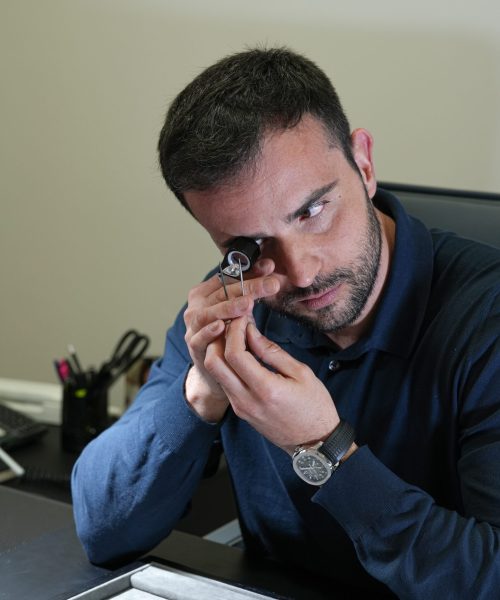Tradition, professionalism, culture, sustainability, ethics are the pillars of a single story.
Our story begins in southern Italy, way back in 1880, the year in which a new concept of understanding the nation was making its way; after the Bourbon tradition and that sense of defeat of the loss of one's autonomy was abandoned, an awareness of a national unity was taking place in the South.
All this situation combined with a new economic era of industrialization with a broader and richer vision, also rich in international contacts.
The entrepreneurial story of our company began when the two Paolillo brothers, Ciro and Gaetano, opened a jewelry store in Torre del Greco, a city that, thanks to Bourbon intuition, had been the cradle of a large number of factories for working coral. The city had become very wealthy, but also architecturally beautiful, hosting a good number of the famous villas of the Golden Mile, vacation spots of the Neapolitan court. This had fostered not only industrial development but also a considerable flow of tourists. In this favorable context, the Paolillo jewelry store combined the tradition of coral working with the skill of the Torrese goldsmiths, as well as the taste for design of the two brothers, who were born in one of those residences of great historical value, in which architectural culture and pictorial decoration went hand in hand.

The family home could boast of Baroque-style frescoes.From childhood, Ciro and Gaetano were surrounded by beauty and thus refined taste and refinement that they would later transfuse into their jewelry. They were thus ambassadors of Neapolitan art even overseas.
At the turn of the century, with Art Deco, they reached the size of a large Company, until World War I paralyzed any kind of economy. Despite everything, they knew how to face adversity, overcoming 1918 with great sacrifices, to plunge into a new economic context, which, almost exorcising the sufferings of the war, revived luxury and tourist flows, in that Torre del Greco considered the Pearl of the Gulf of Naples.
In 1918, from Ciro's marriage to Anna, Charles was born, destined in the future to continue the family tradition.
He soon made Charles learn the art of precious metals trading and coral working, and graduated in economics, though without abandoning the goldsmithing tradition. A new bloody conflict hit the family's thriving economy, and Charles moved to Rome. Since the end of the war, having lost his entire family fortune, but not his professionalism and profound knowledge of precious stones, he restarted his business by traveling in post-war Europe, buying precious stones.
Japanese cultured pearls popped up on the market, and Charles was quick to intercept the opportunity, beginning the importation of large quantities of them, pandering to the dictates of fashion that prescribed pearl jewelry as a symbol of great sophistication.
Increased business led him to open a wholesale office in the capital, at 14 Via della Scrofa, the company's current historic headquarters. The transition from pearls and corals to precious stones was rapid, and Carlo Paolillo became a point of reference for countless jewelers and goldsmiths' workshops that sprang up in Rome.
At the end of the 1960s, son Ciro and, later, second son Paolo joined their father: the economic boom and favorable opportunities oriented the company to expand its reach to the diamond sector as well, opening up a new horizon of success. Continuous travel to the most important markets such as Tel Aviv, Antwerp, Bombay, New York, Bangkok, and Hong Kong led Paolillo to be a leader in the gemstone trade, fostering alliances with government agencies such as IPZS and the Italian Post Office.
In 1994, the Company won a contract to supply the IPZS with diamonds and work on commemorative medals. This opened an era of collaboration that led it to the production of tens of thousands of gold and diamond coins, minted by the Italian Mint.
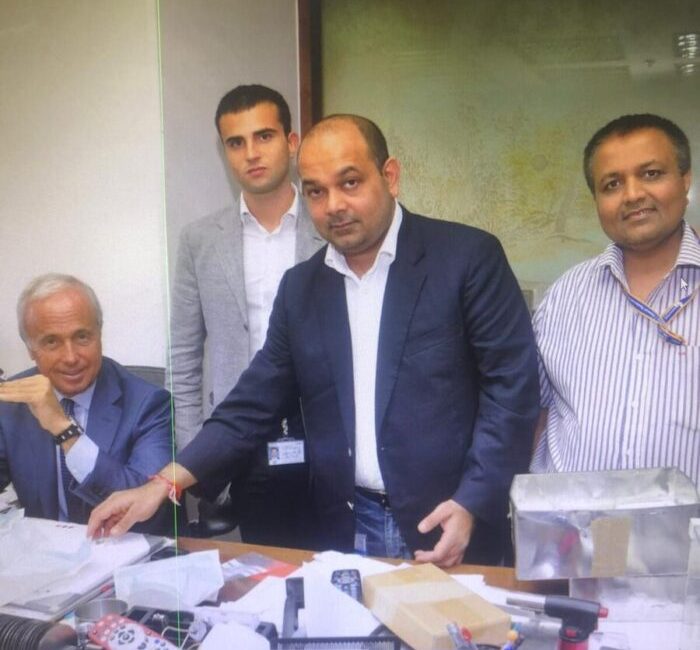

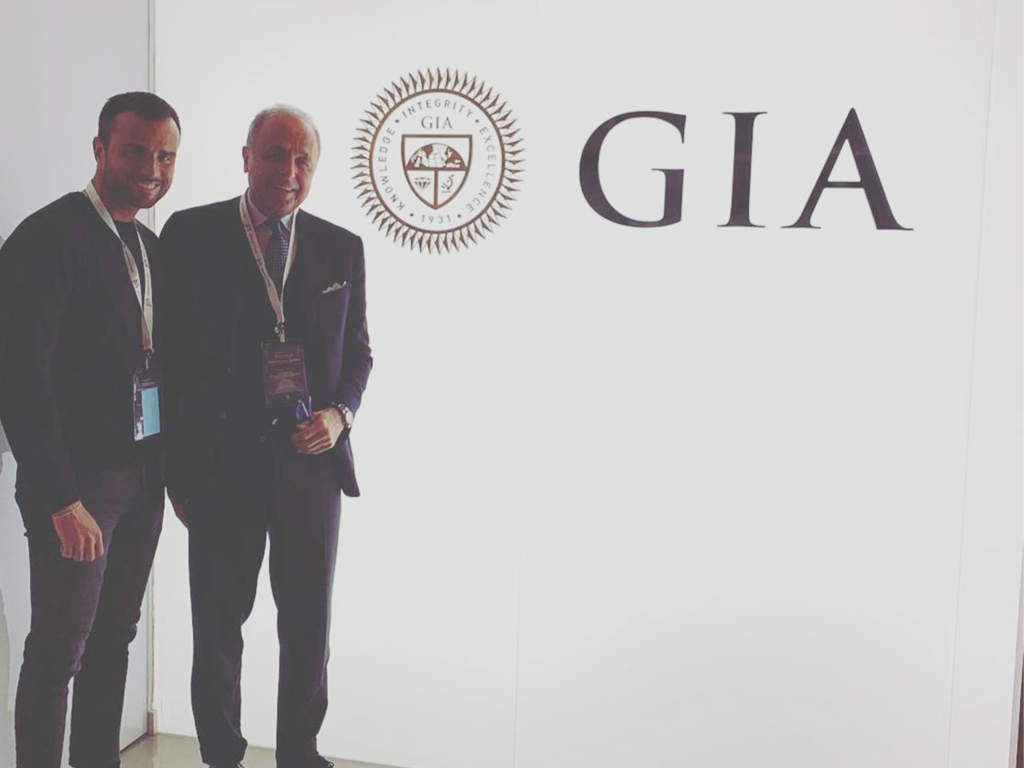
The important growth that was generated gave rise to new Companies under Carlo Paolillo: GESPRE, for services and valuables transportation; DNA Diamond for certified diamond identification through the advanced Gemprint system, unique in the world; IGL, gemological analysis laboratories associated with "La Sapienza" University of Rome; and Karattere, for the sale of jewelry through the Italian Post Office.
After years of work, Paolillo joined the prestigious Carat Club, a network that included the world's largest diamond dealers. As the 21st century approached, the Company had the intuition to suggest a project that turned out to please de Beers and for which a historic three-way agreement was concluded between that global diamond giant, IPZS and Paolillo that enshrined a partnership unique in history, signed in the Hall of Flags of the Capitol, to cut and supply diamonds from De Beers in the commercial circuit to the public.
Ciro Paolillo, ad of the Group, for the occasion, was welcomed to De Beers' London headquarters for the assignment of a "sight" (supply) with which to develop the project: "sight" whose composition, for the first time in history, could be chosen by the client. On that occasion, Paolillo placed his signature in De Beers' book of honor, the only Italian to enjoy this privilege.
The project had exciting outcomes and was celebrated in Rome with a "More than a Diamond" gala with more than 600 guests at Palazzo Lancellotti in October 1998.
On the occasion of the year 2000, Ciro Paolillo carried out various projects and took the occasion of the 100th birthday of the Queen Mother of England to pay homage to her with a medal bearing her effigy, authorized by the British Royal Household, surrounded by diamonds and minted by IPSZ, which proved so pleasing to her that today it is included in the Treasury of the Crown. The Queen Mother's gratitude was substantiated in the invitation to Ascot extended to Ciro Paolillo and his daughter Marta on August 4, 2000, for the August Sovereign's genetliac celebrations.
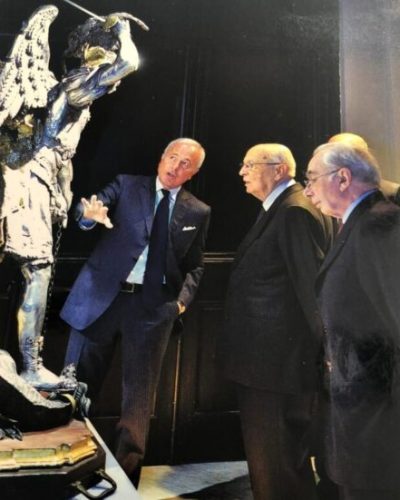
The know-how acquired in working with diamond medals generated a project with Bvlgari, for the production of "Amphitheater" diamond watches whose dial consisted of a commemorative medal for the year 2000, sold by IPZS. It was also the year when, for the Jubilee, Paolillo obtained the logo from the Vatican for the production of commemorative stamps in gold with diamonds, reproducing the cathedrals of the Jubilee route.
Inventiveness and production skills could not stop, and Cyrus, with his son Charles, who was emerging as the fourth generation in the Company, patented a system of malleable gold, which enabled an agreement with Poste Italiane to produce tens of thousands of gold stamps reproducing paper postal issues as well as additional stamps that had the distinction of being the world's first traveling stamps.
With the same patent, books published by the Italian Post Office were printed on gold or silver foil. The product became an object of international collectibles. All these projects brought prestige to a Company that is now 143 years old and, for generational reasons, is splitting into two Companies that will find their own way independently.
Ciro Paolillo has devoted himself, in addition to entrepreneurship, to university teaching at "La Sapienza" University for twenty-two years, and was the promoter and chairman of the Scientific Committee of a project that popularized to the general public the unique wonders of the Treasure of San Gennaro, curating, in 2013, an exceptional Exhibition that housed 70 of the most important pieces from the collection of 21,695 artifacts, at the Fondazione Roma. A true exploit, with hundreds of thousands of visitors.
Subsequently, Ciro Paolillo's professional expertise focused at the Vatican Museums on some important finds of archaeological jewelry and today, in collaboration with the University " La Sapienza" and a number of Italian and foreign universities, he is the scientific head of the Project for the study of the Pompeii Golds kept at the National Archaeological Museum in Naples, the most important in the world.
These studies have resulted in scholarly publications of great scientific significance, some of which have been edited by the IPZS and the CNR.
The baggage of those 143 years today translates into an innovative, dynamic, trailblazing Company. Over the years, in fact, it has developed the foundations of what it represents today.
SUSTAINABILITY.
commitment and transparency thanks to an ethical
conduct, taking care of the environment and the social context
This results in an intergenerational tradition of caring for treated stones, ensuring their ethical provenance. A tradition that has become a duty. A duty that transcends commercial sense to result in a corporate responsibility that translates into integration and conservation of natural and climatic resources. Paolillo is certified by the international RJC (Responsible Jewellery Council) organization by proving, through the Kimberley Process, that its precious stone supplies do not come from conflict zones. In addition, the Company stands intransigently against any form of money laundering, conducts its business with integrity and transparency, and believes in the standards of high professionalism dictated by de Beers, as well as gender equality.
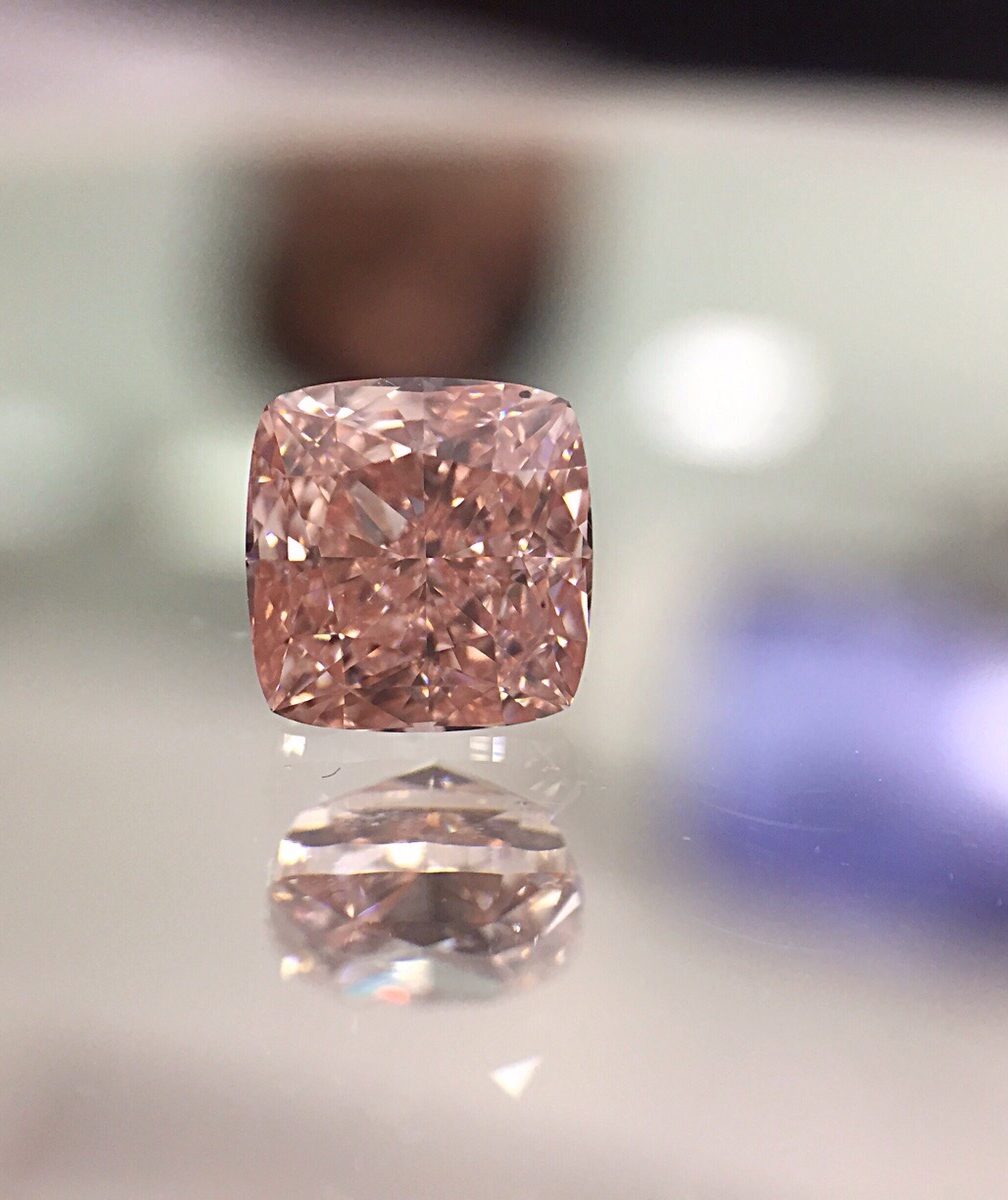
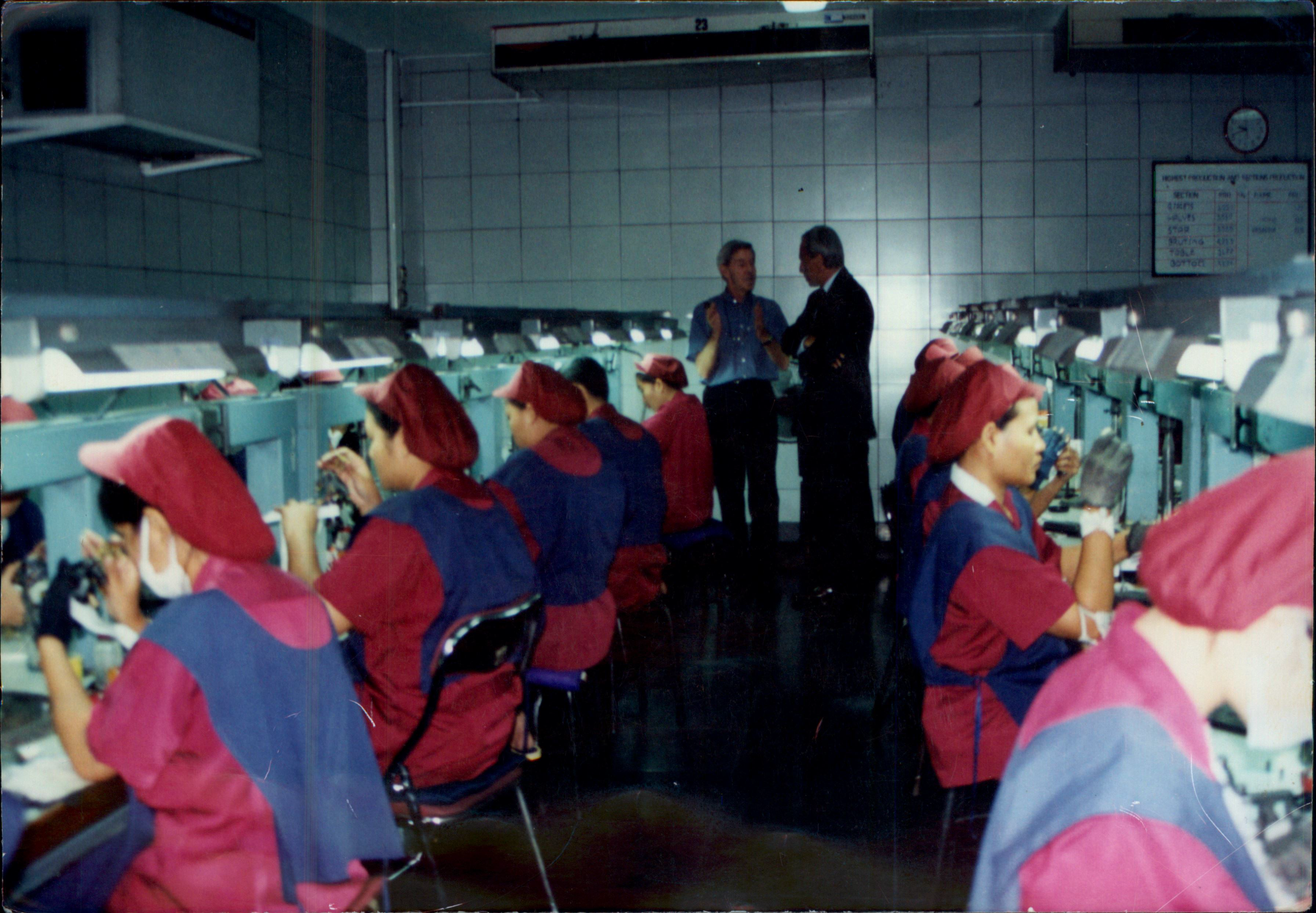
CULTURE
Paolillo, in the creation of its jewelry, reflects a culture strongly anchored in national DNA, a culture that is recognizable and recognized worldwide as an expression of made in Italy. It is an unmistakable style that draws inspiration from studies conducted on ancient and archaeological jewelry; it also makes room for internship sessions to create new professionals to enter the jewelry world.
FUTURE AND SUPPORT TO THE SECTOR.
The Company is deepening studies on new technological frontiers, with the upcoming entry into the Metaverse through blockchain and creations of virtual stores and NFTs.
In addition, Paolillo is working on the creation of a digital journal that, in addition to providing news about the world of gemstones and its economy, will host all those who wish to contribute to the research with articles and videos to be put on the Web, also focusing on interactivity.
